#radzikowski
Video
youtube
PUCHAR POLSKI STRONGMAN 2007 Grodzisk Mazowiecki
2 notes
·
View notes
Photo
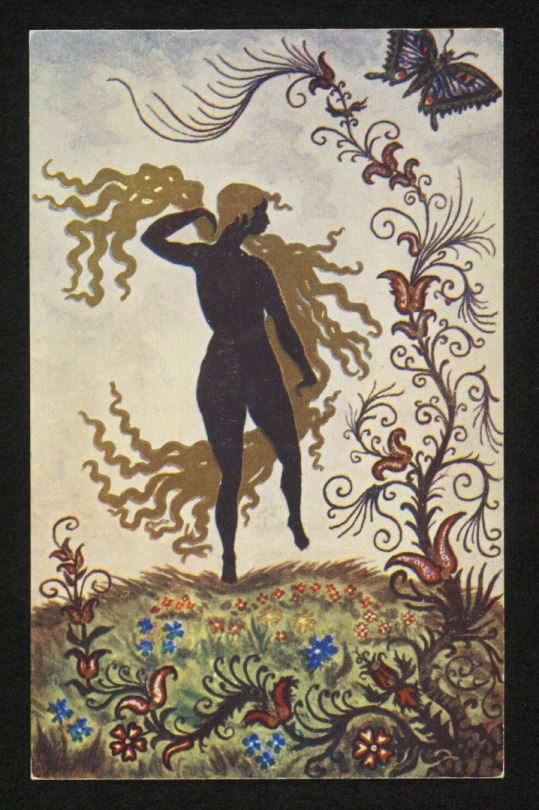
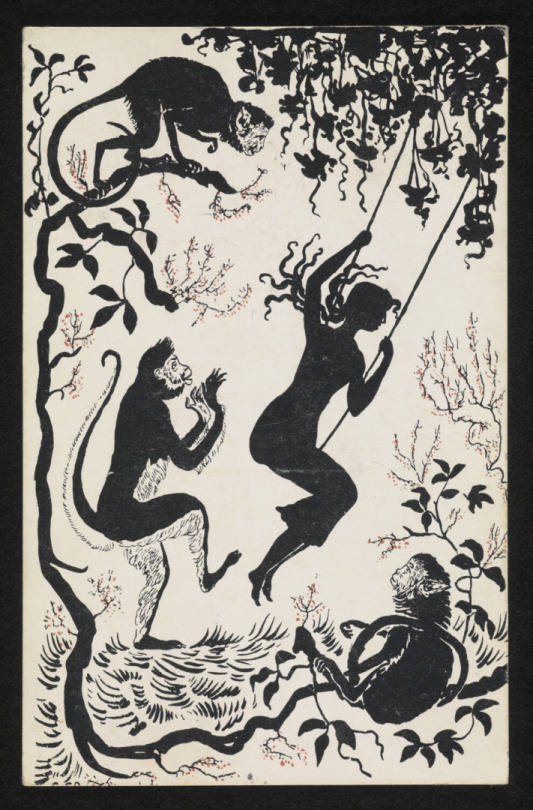


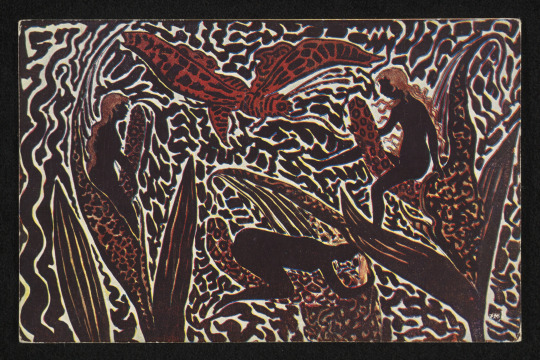
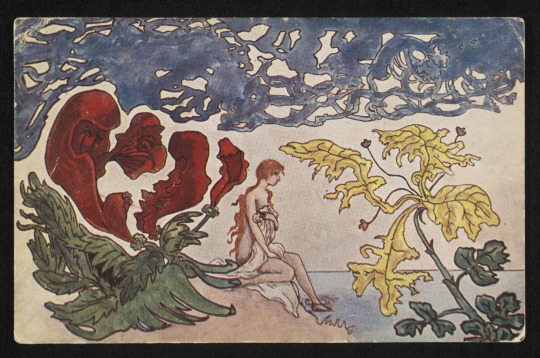
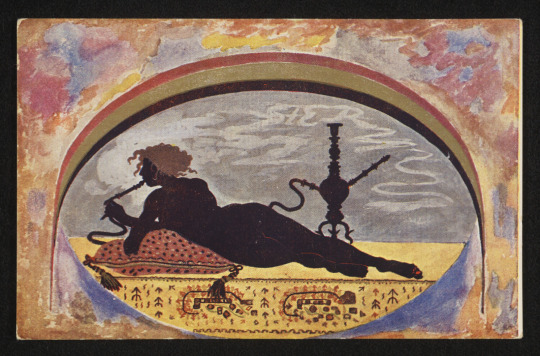
Vintage Polish postcards with artwork by Stanisław Eljasz-Radzikowski. circa 1910.
5K notes
·
View notes
Text
The Forced Conversion of Chełm Eparchy

(Pratulin martyrs in 1874 by Walery Eljasz Radzikowski)
In 988 East Slavic state of Kievan Rus' was converted to the Eastern form of Christianity by Vladimir I of Kiev. Following the East-West Schism between the Roman and Byzantine Churches, the form of Christianity that Kievan Rus followed became known as Eastern Orthodox Church. Over the centuries, the parts of Rus that would one day become northern Ukraine and Belarus were absorbed by Poland. Within the mostly Roman Catholic Polish state, the appointment of Orthodox bishops by the Polish kings tended to favor lay members of the Ruthenian nobility, often with extremely disastrous results. Meanwhile, the elevation of the Metropolitan See of Moscow to a Patriarchate in 1588 enraged many Orthodox Ukrainians, who saw the move as an insult to the seniority of the See of Kyiv.
The religious and cultural revival caused by the Counter-Reformation in Poland drew admiration from many Orthodox priests, who began to consider a transfer of allegiance from the Ottoman-controlled Patriarch of Constantinople to the Pope of Rome. Between 1595-1596, the Union of Brest saw the creation of the Ukrainian Greek Catholic Church and the 1636 Union of Uzhhorod similarly created the Ruthenian Greek Catholic Church in Ruthenian Transcarpathia. Like all the other Eastern Catholic Churches, the Ruthenian and Ukrainian Churches maintain the liturgical, theological and devotional traditions of the Christian East while in communion with the Holy See and the Latin Church.
As the Russian Empire gained the territories along its western frontier through a series of wars and Partitions of Poland that lasted from the seventeenth through the end of the eighteenth centuries, the Greek Catholic Church was deliberately incorporated into the State-controlled Russian Orthodox Church. In 1839, as part of the Tsarist crackdown following the defeat of the November Uprising of 1831, membership in the Eastern Catholic Churches outside Congress Poland was criminalized outright by the Synod of Polotsk. However, this was yet to affect the Eparchy of Chełm.
The longevity of Byzantine Catholicism in this region was attributed to several factors. The eparchy's territory came under Russian control later than did any other Greek Catholic territories ultimately absorbed by Russia (1815 rather than 1795). During the Third Partition of Poland in 1795, it was granted to Austria. Only two decades later, after the Russian victory in the Napoleonic Wars did it become part of Russia. Also, unlike other Greek Catholic regions within the Russian Empire, it had been part of the autonomous Congress Poland. Another factor affecting the Greek Catholic Church's longevity was its deep roots in the local population, which was deeply intermixed between Poles and Ukrainians. Both ethnic groups in the Chełm region viewed the Russian authorities as a mutual enemy. Furthermore, Liturgical Latinizations such as the singing of Polish-language hymns, the playing of organ music, and the reciting of the rosary within the Byzantine Rite were widely considered a matter of national pride, and all attempts to curtail their use were widely ignored.
Conversion

(Tsar Alexander II)
By the end of the 1860s, political circumstances had changed. Following the defeat of the 1865 January Uprising against Tsar Alexander II, all the remaining autonomy of Congress Poland was abolished. After having struggled with Tsarist authorities, Greek Catholic Bishop Mikhail Kuzemsky issued a letter of resignation and left Chełm. Even though the Bishop's resignation was rejected by the Vatican, the Russian authorities immediately appointed a Galician Russophile priest, Fr. Markell Popel, who was living in open concubinage, as Exarch of the eparchy.
Forced conversion to Orthodoxy was preceded by the "purification" the Chełm eparchy of all Latin rituals from the Divine Liturgy, ordered by Popel in October 1873. Initially, it was ignored by many priests, until the Russian state ordered them to sign a declaration that they would abide by the new rules by the New Year of 1874. Over twenty priests refused, and were either arrested or escaped to Galicia. Resistance to the changes was widespread among the Laity, particularly in the northern areas of the eparchy. In numerous parishes, the priests attempting to implement the reforms were dragged out of the church or their belongings were packed outside the rectory. Russian police Constables and Cossacks were used to force the parishioners to accept the de-Latinized Rites; and parishioners who refused to agree were routinely beaten or shot. The struggle has often been compared to that of the Old Believer schism of 1666.
The "purification" having been completed by the end of 1874, from January and May of 1875, all of the parishes officially proclaimed their union with the Orthodox Church. The Eparchy was dissolved and incorporated into the newly created Orthodox eparchy of Chełm and Warsaw, with Bishop Popel becoming suffragan bishop of Lublin residence in Chełm. During the struggle over purification and forced conversion, a total of 600 faithful were deported to Siberia and 108 lost their lives. Sixty-six native Chełm priests who refused to convert to Orthodoxy fled to Galicia, 74 were exiled to Siberia or imprisoned, and seven died as martyrs. Chełm eparchy was purged in the process of most of its native priests, who were replaced by anti-Polish and anti-Catholic Russophile priests recruited from eastern Galicia. In March 1881, out of 291 Orthodox priests in the former eparchy, only 95 were native Chełm priests who had converted, 53 were Orthodox priests assigned to the eparchy from elsewhere, and 143 were Galician Russophiles.
Aftermath
In Galicia, the forced conversion of Chełm was met with support on the part of the Russophiles and indifference among other segments of the Ukrainian Catholic Church. The Russophiles at the time were very influential and succeeded in preventing many refugee priests from Russian Poland from obtaining positions in Galicia's Greek Catholic parishes.
Despite their opposition to Tsarism, Orthodoxy, and local Russophiles, many Galician Ukrainophiles were equally opposed to Liturgical Latinizations within the Byzantine Rite and felt contempt for those who wished to preserve them. Furthermore, as the Ruthenian nobility of Galicia had been completely Polonized for centuries and was widely disliked, many Ukrainian intellectuals in Galicia were both anti-Russian and anti-Polish, even in cases were ethnic Poles were fellow Greek Catholics who were facing religious persecution.
Meanwhile, the local unpopularity of the forced conversion was strong enough that, a generation later, following the religious toleration decree during the Russian Revolution of 1905 which finally allowed Orthodox Christians to legally convert to other religions, 170,000 out of the 450,000 Orthodox in the former Chełm Eparchy had returned to Catholicism by 1908, despite the Russian Government only grudgingly allowing conversion to Catholicism of the Latin Rite.

(Pilgrimage Shrine of the Martyrs of Pratulin, Kostomłoty, Third Polish Republic.)
In 1938, the Roman Catholic Diocese of Siedlce chose, following careful investigation, to submit a cause for the beatification of the Greek Catholic Pratulin Martyrs; 13 men and boys who were fatally shot by soldiers of the Imperial Russian Army on January 24, 1874, while nonviolently resisting the Orthodox confiscation of their parish church in the village of Pratulin, Biała Podlaska. All 13 were beatified by Pope John Paul II on October 6, 1996. In 1998, their relics were transferred to the Ruthenian Greek Catholic Church in nearby Kostomłoty, where the pilgrimage Shrine of the Martyrs of Pratulin has been established.
https://en.wikipedia.org/wiki/Pratulin_Martyrs
https://en.wikipedia.org/wiki/Conversion_of_Che%C5%82m_Eparchy
#catholic#church history#russia#orthodox#poland#ukraine#ruthenian rite#greek orthodox#russian orthodox#chełm#christian
20 notes
·
View notes
Video
Ty42-24 por Mikołaj Radzikowski
Por Flickr:
Oleśnica-Cieśle
2 notes
·
View notes
Note
People still wondering if to the Harry and Lily, James bullshit from Deuxmoi I want you guys to remember that the entire time that the PR stand between Harry and Olivia was going on they were the ones who were pushing the narrative that her and Olivia were extremely serious and needed to kind of convince other people that they were because we know that they were getting paid by Olivia and her team. Remember when the relationship first started they were the ones that were calling it a PR stunt. They were the ones who were also saying that Harry and Olivia were engaged before they broke up. Before the PR stunt reached an end, they were also the ones that were coming up with the rumours that her and Olivia were still together Harry was rumoured with other women. They were the ones who put out the rumour that hairy cheated on Olivia coachella but then completely changed their tune and we’re trying to downplay it like it wasn’t that big of a deal. They were also the ones that said that Harry was in a new relationship around the time that he was making out with Emily Radzikowski. Recently, they were the saying that Olivia and Harry were talking again before he was seen with Taylor, Russell or Ruby Campbell. Any time that Deuxmoi says something it’s always refuted and shower to be not true. Remember that anybody can DM them or send them a blind or send them something anonymous and it could be anything. I could go and send something completely fake and there’s a chance that she’ll probably post it. Before celebrity started paying her. She was somewhat of a decently, credible source, but now she isn’t. And her excepting money from Olivia’s team, and promoting the hell out of here in Olivia’s “relationship” prove to me that most of the shit that she says, is it true.
.
4 notes
·
View notes
Video
vimeo
(LIKE 'EM) CRAZY from Rick Berlin on Vimeo.
The Band:
Jane Mangini (piano)
Sam Dudley (trombone/vox)
Robby Manochio (guitar)
TJ Wenzl (vox)
Al Radzikowski (kit/vox)
Berlin (vox)
Mike DeLi (bass/vox)
Jesse Adams-Lukowski (guitar)
Ricky McLean (guitar/vox)
Audio: Phil Adler
Video: Billy Squire and Magnus Jonsson
Edit: Berlin
0 notes
Photo

“Tourists in the Tatra Mountains” (1894)
by Walery Eljasz Radzikowski (Polish;1841–1905)
oil on canvas
Tatra Museum in Zakopane
#Walery Eljasz Radzikowski#radzikowski#landscape#tourist#poland#mountains#tatras#polish art#polish artist#polish painter#polish painters
80 notes
·
View notes
Photo

“Wojsko Polskie Kościuszki w roku 1794 / Kosciuszko’s Polish Army in the Year 1794” Walery Radzikowski 1894
#illustration#art#kosciuszko#walery radzikowski#insurekcja kościuszkowska#powstanie kościuszkowskie#tadeusz kościuszko
7 notes
·
View notes
Photo










Excerpts from a series of postcard illustrations by Stanisław Eliasz Radzikowski, c. 1910-1911. The series was inspired by various roles by actress Irena Solska (1877/78-1958).
Source: Muzeum Historyczne Miasta Krakowa
6K notes
·
View notes
Video
youtube
Wszyscy Polacy na Arnold Strongman Classic w Ohio
#youtube#strongman#arnold schwarzenegger#schwarzenegger#arnoldclassic#radzikowski#pudzianowski#pudzian#kieliszkowski#ziółkowski
0 notes
Photo

“Self-Portrait”, 1860 by Walery Eljasz-Radzikowski (1841-1905)
■ Walery Eljasz-Radzikowski (September 13, 1841 – March 23, 1905) was a Polish painter, illustrator, teacher of fine arts and photographer active during the foreign Partitions of Poland.
■ Walery Eljasz-Radzikowski (second name Radzikowski was adopted later in life) studied painting in 1856-62 at the School of Fine Arts in Kraków (known today as the Jan Matejko Academy of Fine Arts) mainly at the atelier of famous Władysław Łuszczkiewicz.
#Walery Eljasz-Radzikowski#poland#polska#painting#polish#polski#malarz#european#art#artist#wladyslaw luszczkiewicz#walery eljasz
10 notes
·
View notes
Photo

Stanisław Eliasz Radzikowski @MenschOhneMusil
45 notes
·
View notes
Text
„- Nie ma takich czasów, panie Radzikowski, żeby dobre były dla wszystkich. I pewnie takich nigdy nie było. Dobre czasy to nie te, w których się żyło, ale które się wspomina.“
5 notes
·
View notes
Video
vimeo
BADVILLE from Rick Berlin on Vimeo.
The band:
Jane Mangini (piano)
Sam Dudley (trombone/vox)
Robby Manochio (guitar)
TJ Wenzl (vox)
Al Radzikowski (kit/vox)
Berlin (vox)
Mike DeLi (bass/vox)
Jesse Adams-Lukowski (guitar)
Ricky McLean (guitar/vox)
MC: Ryan H Walsh
Audio: Phil Adler
Video: Billy Squire and Magnus Jonsson
Edit: Berlin
0 notes










